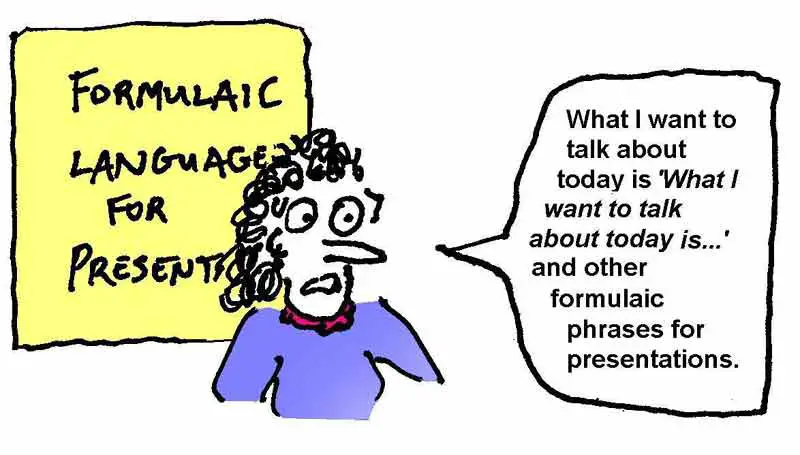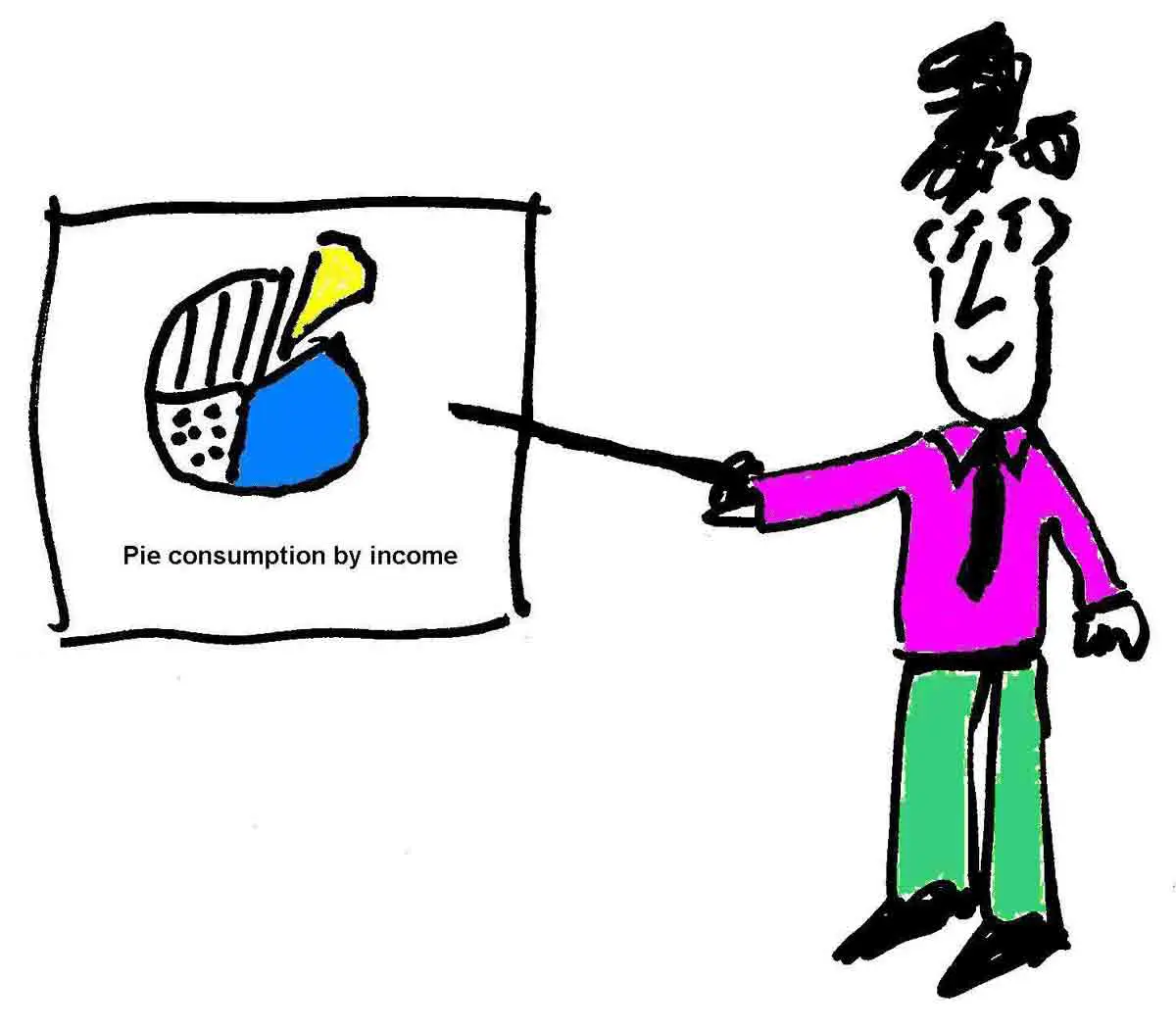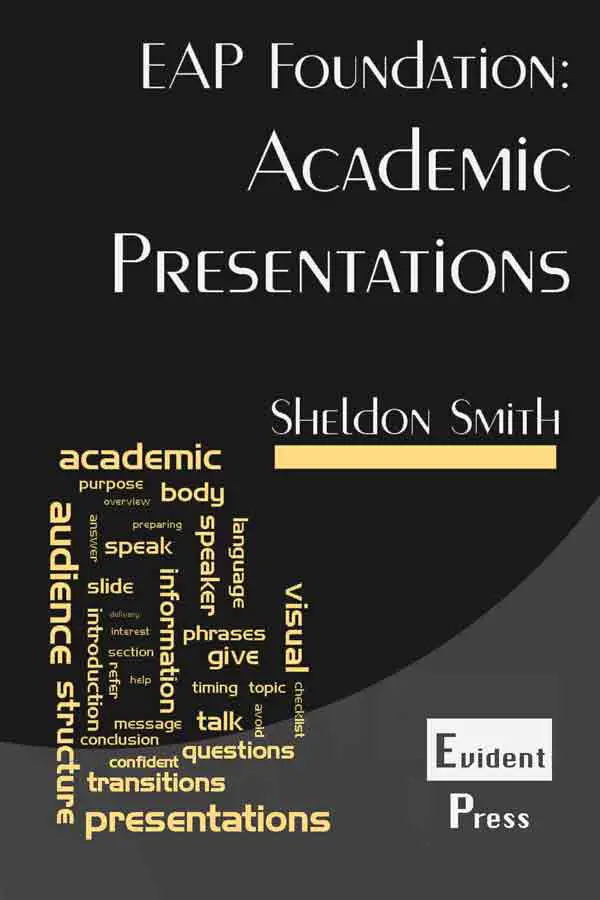Show AWL words on this page.
Show sorted lists of these words.


 







|
 Podcast is loading. Problems? Too slow? You can also access the Podcast by
clicking here.
Podcast is loading. Problems? Too slow? You can also access the Podcast by
clicking here.This message will disappear when then podcast has fully loaded.
On this page you will find some language for presentations, also known as 'signpost' phrases. Many of these are similar to (or the same as) the lecture cues a lecturer uses. They are another example of the formulaic language used in academic contexts. You do not need to learn all of these phrases. Your basic aim is to be able to use at least one phrase for each function (e.g. expressing purpose and showing the structure in the introduction, using transitions between sections, referring to visual aids, concluding).
 For another look at the same content, check out the
language for presentations infographic ».
For another look at the same content, check out the
language for presentations infographic ».
How many more you learn after this is up to you. Presentations usually have many visual aids and transitions, so it would be useful to learn two or three different phrases for these functions. On the other hand, you will only state the purpose once in a presentation, so one phrase is enough for life!
Introductions
The introduction is a crucial part of any presentation. There are many functions which you need to achieve:
- greet the audience
- express your purpose
- give the structure
- give the timing
- handle questions
Phrases for all of these are given in the box to the right.

Greeting the audience
- Good morning/afternoon, ladies and gentlemen.
- Good morning/afternoon, everyone.
Expressing the purpose
- My purpose/objective/aim today is...
- What I want to do this morning/afternoon/today is...
- I'm here today to...
Giving the structure
- This talk is divided into four main parts.
- To start with/Firstly, I'd like to look at...
- Then/Secondly, I'll be talking about...
- Thirdly...
- My fourth point will be about...
- Finally, I'll be looking at...
Giving the timing
- My presentation/talk/lecture will take/last about 20 minutes.
Handling questions
- At the end of my talk, there will be a chance to ask questions.
- I'll be happy to answer any questions you have at the end of my presentation.
Visual aids

It is important to be able to refer to your
visual aids appropriately.
Some useful phrases for visuals are shown to the right.
Visual aids
- As you can see here...
- Here we can see...
- If we look at this slide...
- This slide shows...
- If you look at the screen, you'll see...
- This table/diagram/chart/slide shows...
- I'd like you to look at this...
- Let me show you...
- Let's (have a) look at...
- On the right/left you can see...
Transitions
A vital part of any presentation is 'transitioning' (moving on) to a new section. Why is this so crucial? Mainly because of the difference between listening and reading. When you are reading, you can easily see where one section (or paragraph) ends, and another begins. This is not true when you are listening. To help with this, good academic speakers, whether in presentations or lectures, give cues to signal the end of a section. This helps the listener understand the structure and follow the main points.
Some useful transition phrases are shown to the right.
Transitions
- Let's now move on to/turn to...
- I now want to go on to...
- This leads/brings me to my next point, which is...
- I'd now like to move on to/turn to...
- So far we have looked at... Now I'd like to...
Other phrases
There are some other phrases which are useful in a presentation. These include giving examples, summarising a point or section, and making a digression.
Giving examples
- Let me give you an example...
- such as...
- for instance...
- A good example of this is...
Summarising
- What I'm trying to say is...
- Let me just try and sum that up before we move on to...
- So far, I've presented...
Digressing
- I might just mention...
- Incidentally...
Concluding
The conclusion, like the introduction, has several functions which you need to achieve:
- sum up the main points of the presentation
- conclude (by giving a 'take-away' message)
- close (by thanking the audience)
- invite questions
Phrases for all of these are given in the box to the right.
Summing up
- Summing up...
- To summarise...
- So, to sum up...
- To recap...
- Let me now sum up.
Concluding
- Let me end by saying...
- I'd like to finish by emphasising...
- In conclusion I'd like to say...
- Finally, may I say...
Closing
- Thank you for your attention/time.
- Thank you (for listening/very much).
Questions
- If you have any questions or comments, I'll be happy to answer them now.
- If there are any questions, I'll do my best to answer them.
- Are there any more questions?
Checklist
Below is a checklist for presentation language. Use it to help you prepare. You can download a copy of the checklist from the speaking resources page.
| Item (I can/the speaker does) | OK? | Comments |
| greet the audience | ||
| state the purpose | ||
| give the structure of the presentation | ||
| inform the audience about timing and handling questions | ||
| refer to visuals using appropriate language | ||
| give transitions between sections | ||
| sum up and conclude | ||
| thank the audience and invite questions |
Next section
Read more about body language in the next section.
Previous section
Read the previous article about presentation structure.



